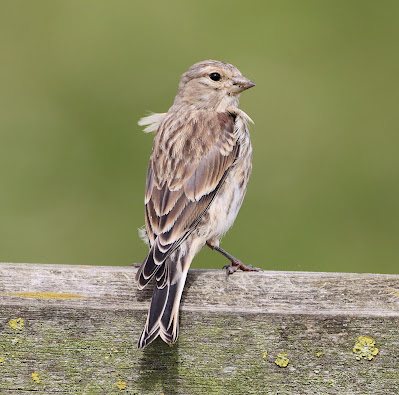2023 was such a poor year for ringing birds that our site at Pilling yielded just 2 Common Whitethroats, one in July and one in August. Neither were caught after the initial day of ringing. They both moved on elsewhere.
Imagine our surprise, a notification from the BTO this week told us that ACV6277 a juvenile we ringed on July 9th was caught in Spain later in the year. If only this particular recovery rate of 50% could be replicated with all ringed birds.
Common Whitethroat ACV6277
ACV6277 was recaptured by Spanish ringers at San Roque-Darbo, Cangas de Morrazo, Pontevedra on September 1st 2023, some 54 days later.
Whitethroat ACV6277 - Cockerham to Pontevedra
I looked up the place name of Cangas de Morrazo and discovered it to be a small coastal town in Northern Spain close to the city of Vigo and to the border of Portugal/Spain. It looks a great place for a September break, a traditional Spanish fishing village that is close to a nature reserve - Zonas de Especial Protección para las Aves (ZEPA). A pure guess but there is a good chance that ACV6277 was recaptured in this very place and soon afterwards set off to continue its first ever journey to Africa.
https://www.mardeons.es/blog/observar-aves-en-cies-y-ons/
A summer visitor to the UK from Africa, the Common Whitethroat is small, brown warbler that frequents hedgerow and scrubby areas across Britain & Ireland from April to October.
Its winter quarters in Africa occupy the dry Sahel just to the south of the Sahara. This area is subject to prolonged periods of drought which affect Whitethroat overwinter survival. Such conditions led to a crash of 90% in UK Whitethroat numbers in the late-1960s, from which this species is still recovering.
Whitethroat
Whitethroat
Whitethroats breed throughout the UK and it can be found from Cornwall to northern Scotland, as well as across Ireland.
The Whitethroat has suffered a 63% decrease in its population in the years 1967 -2020, hardly surprising given the way that the UK continues its desire to concrete over the entire landscape.
No One Cares. Money speaks louder than wildlife.
For example.
“A
holiday village and eco-park with up to 450 lodges, a hotel, market
place, virtual reality wildlife experience and craftworkers’ pods
is proposed for land south of Lancaster in
a planning application.
Land
at Home Farm, Ellel Grange, near Galgate, near the
M6, is the
proposed site for the scheme by applicants TNPG Sandeman Trust and
Ellel Holiday Village Ltd.
But
the outline application has prompted hundreds of objections along
with some letters of support, according to Lancaster
City Council planning
reports”.
This really does beggar belief but many have seen for
years where we as a nation are
heading when wildlife and the countryside is to be destroyed and replaced
by virtual wildlife and
craftworkers' pods.
You really couldn't make this shit up if you tried.
Linking this week to Eileen's Blog.



































































